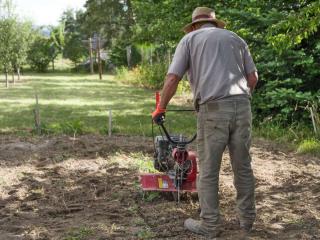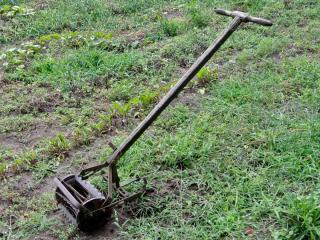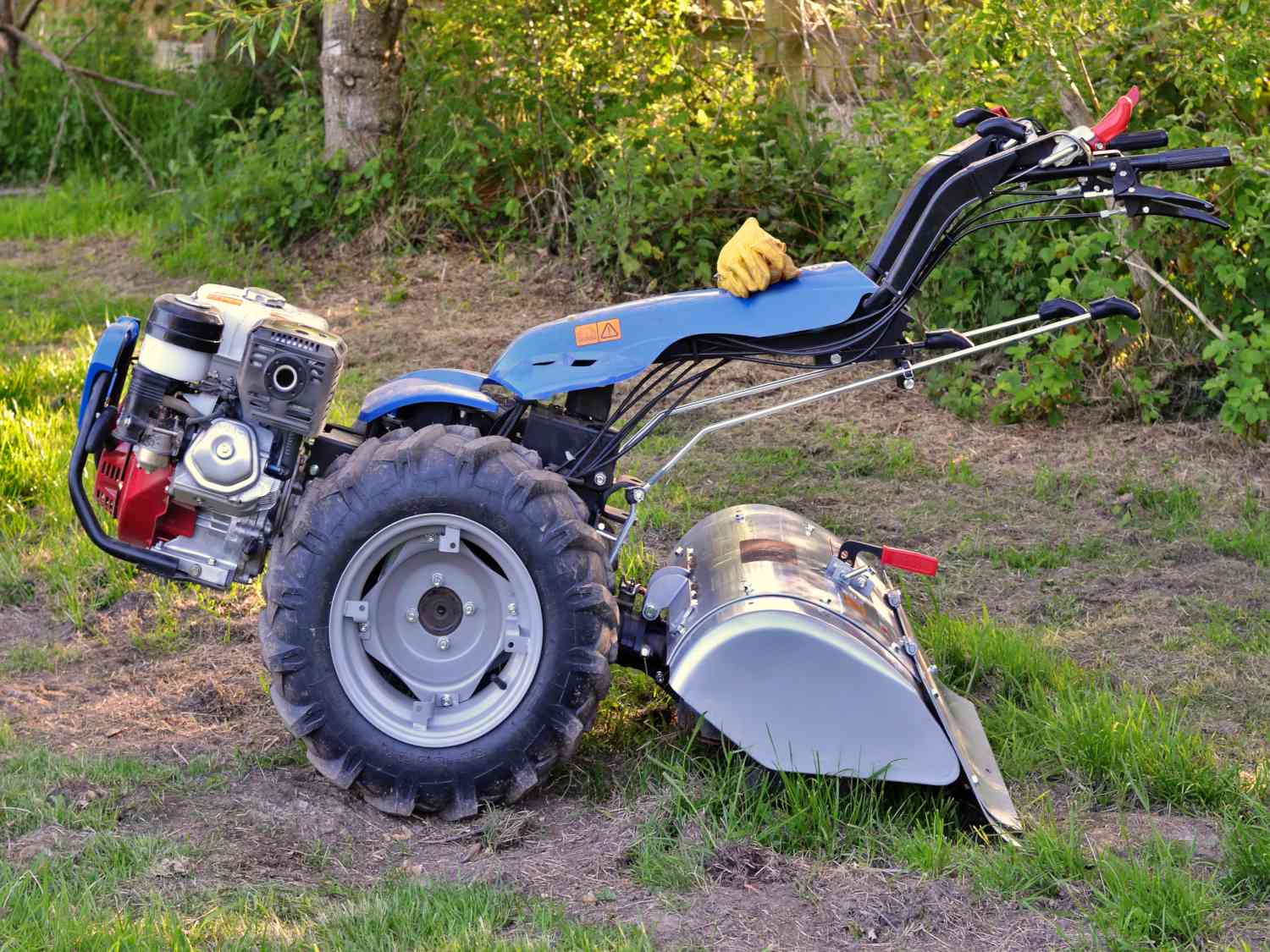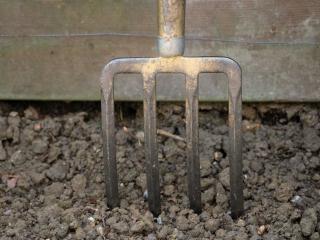A rototiller is a very useful when starting a vegetable patch or lawn, and it also helps for tilling the soil, hoeing and cultivating or removing weeds.
Whether the surface is large or small, a mini tiller or a rototiller will greatly ease any garden work and will keep you from wasting efforts or hurt your back.
Although this equipment was originally designed for professionals, nowadays a wide range of products are available for home gardeners.
The rototiller
A rototiller is what you need for surfaces larger than 600 sq yd (500 m²).

The engine drives the wheels with a belt or shaft.
It often comes with gears of various speeds, including reverse, so handling it is quite easy.
It is an essential tool for preparing new lawns and also to till and maintain the vegetable patch in fall and at the beginning of spring. Note that it’s the best way to mix soil conditioner and compost into the ground.
Advantages of the rototiller
- Wide breadth, up to 32 inches (80 cm), which makes it capable of covering large surfaces quickly.
- Its powerful engine lets it face hostile, difficult terrain.
- Ease of handling thanks to reverse speed and multiple speed settings.
- A cultivator tool can be hitched to the device, too.
Disadvantages of the rototiller
- Takes up more space.
- More maintenance is required.
- Costs over 500 dollars (400 euros).
The mini tiller

Unlike the rototiller, the machine isn’t pulled by wheels, but is driven by the blades themselves.
The more powerful the engine, the more blades are attached and the wider the breadth that is tilled.
If you’ve got to set up a lawn, best select a rototiller: the blades run deeper than those of a mini tiller. A mini tiller will certainly not be powerful enough for an entire lawn.
Advantages of the mini tiller
- You can easily work through smaller surfaces.
- Very easy handling, especially in slopes.
- Light tool and small footprint in the shed.
- Also comes as an electric device, even though the battery runs out with time.
- Great for weekly maintenance of the vegetable patch.
- Costs anywhere from 150 to 1000 dollars (120 to 850 euros) depending on whether it’s manual, electric or gas-powered.
Disadvantages of the mini tiller
- Not powerful enough to turn the soil over to start a lawn.
- Use in the vegetable patch is restricted to very basic tasks, although it still is worthwhile.
- Requires careful handling in the case of electric versions, so that you don’t chop the cable by running over it.
To sum it up, purchasing a rototiller or a mini tiller essentially depends on the use you’re going have for it.
Even if the cost varies from one design to the next, regular care for a vegetable patch or creating a lawn will require a rototiller, whereas most other garden tasks can easily be performed by a mini tiller, or even, if done only rarely, a simple hoe.





I have a question
Ask my questionI'd like to comment
Post a commentNo comments yet – be the first to share your thoughts!